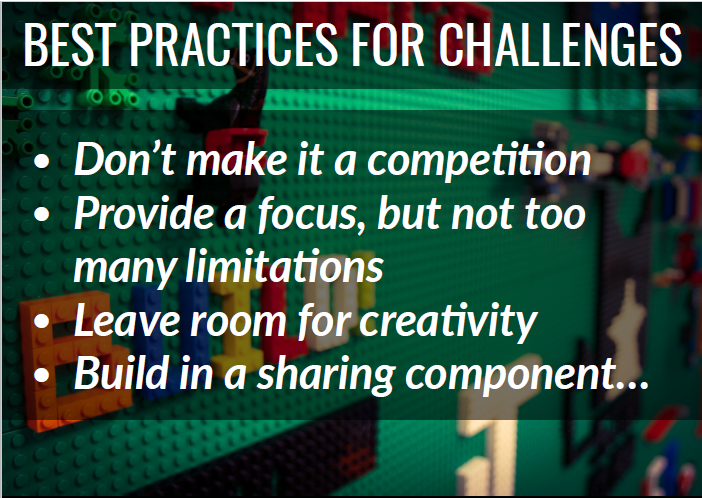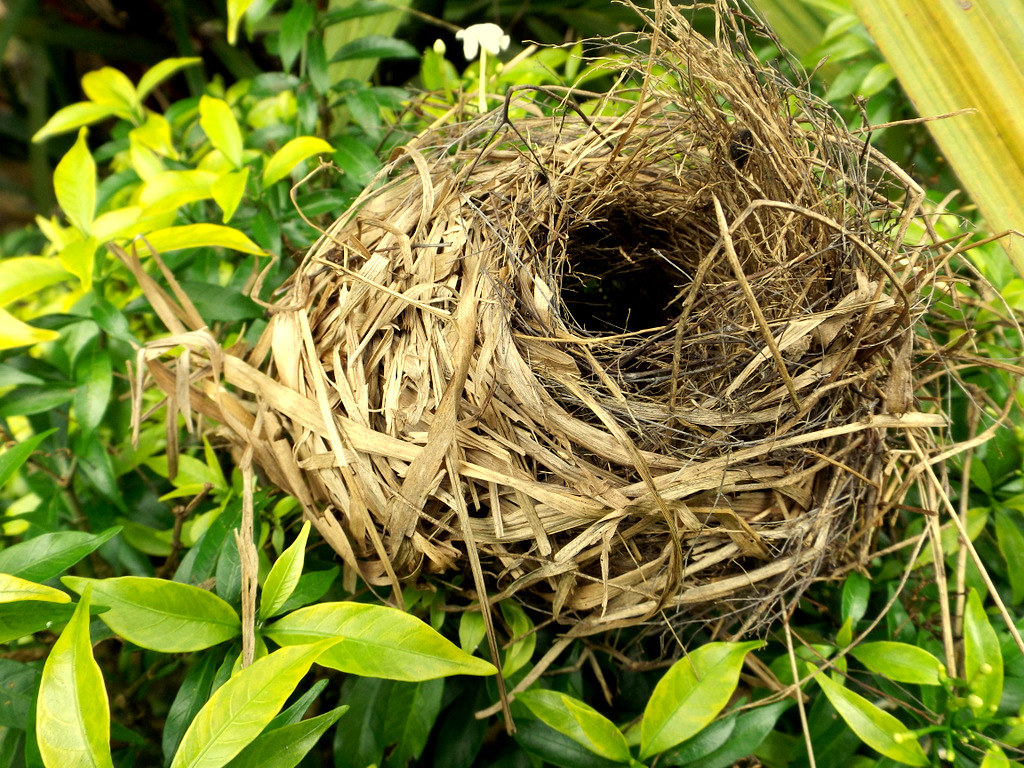It's fun to be learning these things right along with the kids!
Saturday, April 23, 2016
3D Printing - We've come a long way!!
It's fun to be learning these things right along with the kids!
Cultivating Creativity
We recently spoke at WEMTA about the Maker Mindset, and how it's not about the space, not about the materials, not about the product, but about the process - implementing the engineering design process, learning through failures, and thinking creatively. This year I have seen that in action from first grade through fourth grade in the makerspace, and it never ceases to amaze me.
Last week my second grade class was starting vehicle design. We did this same project last year in the spring, to support their science unit, so I assumed I'd see the same types of projects. The plans blew me away!
Their challenge is to make a vehicle that has wheels and axles as well as a body. I've learned in my two years of doing this that the more open you make the challenge, the more learning happens. I didn't want to tell them what materials they had to use, how big it had to be (other than they have to be able to take it home with them at the end, so it can't be enormous!) and it had to travel down a ramp. That's it. I provided them with research sources (Pebble Go) and we window-shopped materials to brainstorm. From there it was up to them.

Last week my second grade class was starting vehicle design. We did this same project last year in the spring, to support their science unit, so I assumed I'd see the same types of projects. The plans blew me away!
Their challenge is to make a vehicle that has wheels and axles as well as a body. I've learned in my two years of doing this that the more open you make the challenge, the more learning happens. I didn't want to tell them what materials they had to use, how big it had to be (other than they have to be able to take it home with them at the end, so it can't be enormous!) and it had to travel down a ramp. That's it. I provided them with research sources (Pebble Go) and we window-shopped materials to brainstorm. From there it was up to them.
Last year I got a lot of creations that were very similar in design - cardboard boxes with various caps and lids or empty thread spools as the wheels, connected with dowel rods for axles. There are still many of these in the plans this year, but I'm seeing that as they work, the students' minds are open and thinking creatively, and I'm watching them revise their plans to add unique elements, many of which integrate the electrical circuit kits we have in the space. I had one pair of students immediately ask me if I had a way to make it solar powered (I bought some solar powered car kits this year that they will be using as their "research" as they design a body of their own and use the solar panel/power element from the kit to power their own creation). I had a group that was set on creating a remote control car. They, too, will be learning from a "create your own r/c car kit" and using the parts in their own design. I had a student ask if he could take apart an old skateboard (yes, but only with parent permission!) to see how it works and use the pieces to create his design. I have a group modeling their design after brush-bots and using a small motor and battery to make it go. None of these ideas were prompted by me. None of them were even suggested. They got an idea in their heads and knew they were empowered to pursue it. They knew how to research the information they needed to come up with a plan, and most importantly, they knew that their learning was not measured in the success of their end product as much as in their exploring, testing, trying, reading, discussing, and analyzing.
Later in the week, the first graders were making their "litter bugs" for Earth Day. Again, this is a project we did last year, so I figured the outcome would be somewhat predictable. And again, I was proven wrong! I have one student who designed a butterfly out of a variety of materials, but rather than stopping there, she took a box, made a habitat for it, and strung it up with fishing wire so that it was actually flying in its habitat. Another student asked me if I could teach him how to "use electricity" to put a bulb on his firefly design so that it lit up. One girl decided that creating a litter bug wasn't good enough for her - she wanted something more purposeful, so she made the bug's body a fabric sack, with the opening at the bugs mouth, so that it could be used as a bag to collect litter on Earth Day (so sweet!). One boy made his bug's body out of a huge plastic tub (the Costco Pretzel kind) covered with blue fabric to match the recycle bins in our building. He is hoping his teacher will allow them to use it as a recycling bin in the classroom to "make recycling like a fun game".
When we implemented our makerspace 18 months ago, we saw that products created during library/tech time often looked very similar, and often used many of the same materials. I love that we're no longer seeing that to be the norm! And credit falls on the whole school community embracing this maker mindset, both in the makerspace and out. So much growth for all of us in these two years!
(I'll update with pictures when the projects are complete!)
Wednesday, April 20, 2016
With my K5 math enrichment group, we started a STEM project that combined a variety of skills. The students were given a list of 8 different challenges (build a bridge, build a tower, build a rocket, etc.) to choose from. They had to design a plan and figure out what materials they would need to "buy" from me. Popsicle sticks, cups, aluminum foil, etc. all cost a different amount. Students needed to add up their total and make sure they didn't "spend" more than $10.00 on materials. As the students were filling out their planing sheets, I realized they did not know how to fill out the materials spreadsheet... great opportunity for a mini lesson! Some of the challenges had a specific height requirement (tower had to be at least 20 cm tall). This lead to another great mini lesson on what is a centimeter, how is it different than an inch, and how to use both the metric and customary sides of a ruler. Finally, as the students were buying and returning materials they needed to exchange, it provided more great opportunities for mini lessons on how to add and subtract money. Again, this project took longer than I anticipated but it was worth it! My students learned money, measuring, adding, subtracting, and engineering skills during this very engaging STEM activity. I also found it interesting that I had 10 groups and only 3 of them chose the same challenge. It was so fun to see a variety of projects in the end.
Wednesday, April 6, 2016
See you at WEMTA!

This year Mrs. Harrop will be presenting on the use of 3D Printing to reach all learners.
And both Mrs. Harrop and Mrs. Voigt (who is now in the Kettle Moraine School District as the Media Center and Makerspaces Coordinator for Secondary Schools) will be presenting about Integrating the Maker Mindset throughout the K-12 curriculum.
Check back here for the final versions of our presentations in the upcoming days!
Third Grade "Wonder" Projects
We started with a great discussion about what makes a "meaty" topic. This helped the kids pare down what they were considering. In some cases, they were trying to choose topics that were too meaty or too abstract ("How was the world created?"), and in some cases their topics were too based on opinions rather than facts ("Why is Wisconsin the best state?"). I felt like they all ended up with great topics that were of high interest to them.
We spent some time learning about how to find good sources, how to decide if they were good sources, and how to cite them, and working on how to to take good notes. I loved that the library skills integrated so organically into the makerspace project. That has always been our goal.
Subscribe to:
Posts (Atom)
Bird Nest Challenge
"Bird's Nest" by Rugged Lens is licensed under CC BY-SA 2.0 Nothing says "Spring" like birds making nex...

-
One of my favorite projects so far this year was our first attempt at using the sewing machines . The third grade class was given the chall...
-
Next week is Spring Vacation, although for most of us, there will be no vacations taking place this year! And the snow falling outside today...
-
Last week, we hosted our first ever STEAM Night. What is STEAM? STEAM stands for Science, Technology, Engineering, Arts and Math. ...

